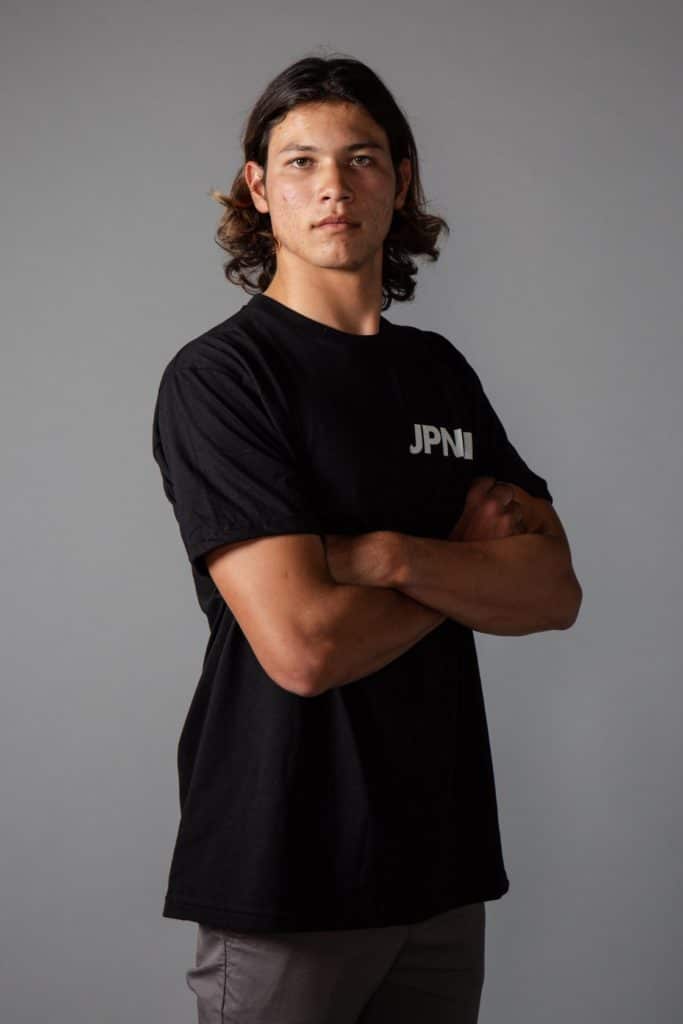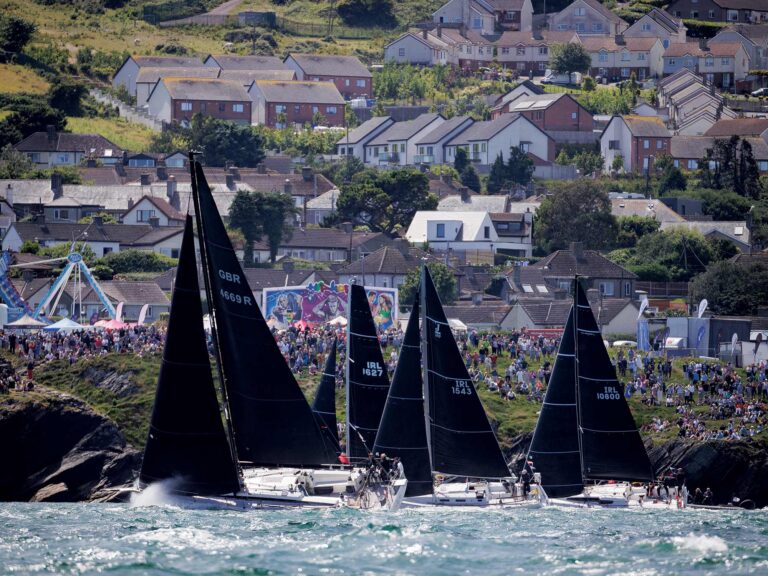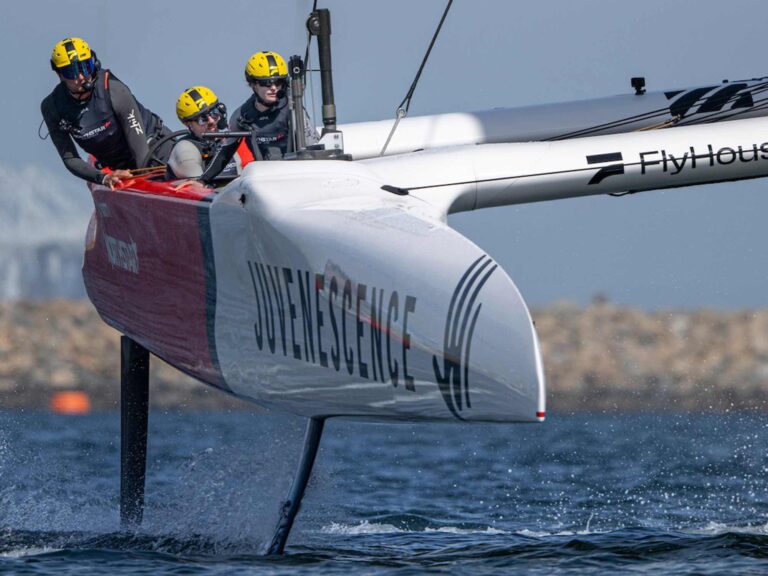Leonard Takahashi will be Japan’s Olympic 49er representative at the upcoming Tokyo Olympics, core member and flight controller on Japan’s SailGP entry, former Kiwi Youth Match Racing champion and perhaps one of the top all around young sailors in the world today who is part of the “youth movement” defining the future of the sport. We’ll be catching up with him after each big event on his schedule to hear his thoughts on the event as well as where he sees the sport going and how it’s evolving – through his eyes.

As a rising star on the Olympic and professional circuits, tapped to do radio commentary in your home country of New Zealand for the America’s Cup alongside legendary Peter Montgomery, what does the new frontier of sailing look like to you? Is it all about foilers, skiffs and cats?
I would say there is a yes and a no to this question … for me personally I have done lots of sailing on the keelboats in New Zealand, whether it was match racing or doing the big boat series they have in Auckland and I really enjoy this type of sailing. It is so tactical and the skills I have learnt from sailing on big boats/match racing has really translated into how I sail the 49er in different aspects of the race. But the way the sport is going right now is really cool, too, high speeds and the adrenaline rush makes it really interesting and fun for spectators and for the sailors. But a wise person always told me that it is very important to open yourself to every kind of sailing and gather skills from different boats and I still hold myself to that.
Reigning Olympic gold medalists and America’s Cup champions Pete Burling and Blair Tuke are your main competitors in the 49er – both in New Zealand – but also at the upcoming Olympics and SailGP circuit. As you prepare to represent your birth-country of Japan at the upcoming Tokyo Games in the 49er and this month’s Bermuda SailGP, how do you beat these guys and what makes them so tough?
Many have tried and many have failed, it will really take a special team to beat them. They are the complete team, perfect in every part of the course. What makes them so good is that they make the least mistakes compared to anyone else on the course, and if they do make a mistake they can stop the snowball effect and get back on track fast. And at the end of the day you can win in any sport if you make the least mistakes on the day.
The new world of sailing that is exciting and attracting top youth like yourself is fast, athletic and wicked fun! Is it possible to prioritize speed, athleticism and tactics – or do you simply need all three to win?
It is super exciting to see where the sport is going, there definitely is priority. You need to have the athleticism without question. You need to be explosive and then have durability to last the whole event. I think speed is the highest priority because if you can have the speed edge on the fleet then the tactics will be easier. But to be the complete sailor and to have no flaws you need to have tactics and speed at the highest level to compete with the best.
One surprising element to many as they watched the America’s Cup, was the need and importance put on the human element. Great racing due to great decisions from the sailors and hardly any mistakes. Real tactics and real hand to hand combat. Breeze reading and boat positioning was paramount – from starting box to finish. Many would say the human element and breeze reading was the difference maker through the Prada Cup but also in the Match itself. How important is breeze reading in fast foiling boats and the Olympic 49er? Isn’t pressure (and angle) of paramount importance?
The technology is so advanced in the SAILGP and the Cup. All the boats have very high-tech software with speed targets and screens which tells the skipper where to put the boat to have the best angle to the mark. But sometimes the breeze is shifty or up and down and the software won’t be able keep up. That is when then human factor is important. The teams need to be able to switch on and use their own intuition to make decisions on the shifts and where the next pressure will be. We saw this in the Match when Pete Burling was able to exploit the Prada team’s weakness of dual helmsman. Since the two helmsmen do not cross sides, it makes it difficult for them to make key decisions especially when the breeze is shifty, they lose lots of vision and splits the decision making. This meant the Kiwis were able to have Glenn Ashby on either side with plenty of vision and in that way they were able to look for the breeze…the holes and the shifts much easier.
With the speeds these boats are achieving combined with the athleticism and skill required from the sailors, we’re now seeing helmets and body armor more as the norm than the exception. How important is eye protection combined with the ability to Read the Breeze? Is that one of the reasons you’ve chosen to wear Tajima Lenses?
Even with the speeds increasing the wind is still very important to read. The apparent wind increasing means that we are overtaking gusts which is so unreal to think about. Eye protection is critically important, especially growing up in NZ where the sun is harsh. It’s so important to wear eye protection to keep your eyes safe, yet remain open while reading the course at such hi speeds and spray pelting you. You can definitely underestimate the sun so I am fortunate that we have such good eye protection technology that comes along with sharp lenses that help me read the breeze better.
Are there particular lens tints or colors that you prefer for certain conditions? Do you stick with one favorite or prefer to have a small arsenal of specific performance tints for advantages in various wind and sun conditions?
For me, I rely on a few tints. Gray Blue Mirror, and Silver Mirror for brighter conditions and sharp tones. I really rate the Brown 15 Green Mirror highly due to the additional contrast and detail they provide. It’s a bit of a hybrid lens that you can use when it is sunny and overcast. When in overcast conditions it really highlights contrast, detail and outlines the gusts and wind really well. I think it is very important to have and get used to using different tints for the different wind and sun conditions, so I am really grateful that Tajima has given me the option to use so many different tints.
Interviewed brought to you by Tajima-Direct.com, delivering prescription and non-prescription polarized lens replacement for any brand, and virtually any frame style.









